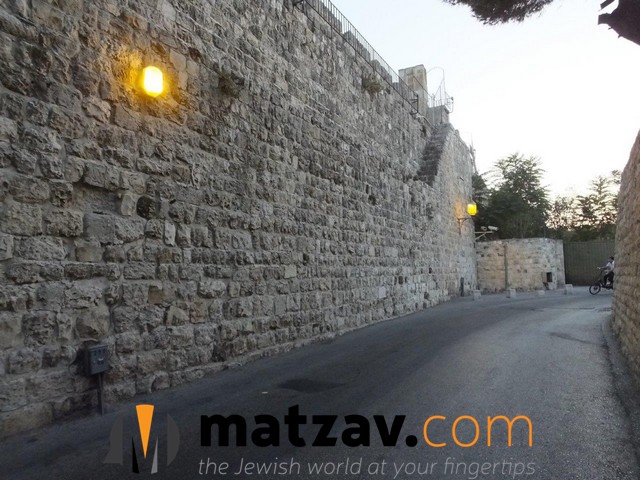Various Perspectives and Experiences of Anglo-Chareidim Living in Eretz Yisroel
Soul Connection
When I came to learn at a yeshivah in Yerushalayim in 1982, it was only for a year. At that time, the Land was still quite foreign to me, as I was used to life back in Canada. I was just more comfortable living on the other side of the ocean.
That quickly changed over the course of the year, and I had come to love being in Eretz Yisroel, becoming more connected to the Land and feeling so much closer to Hashem. It was the place to be Jewish, so I chose to stay here another year—which led to another year. By the fourth year, it was clear to me that I wanted to live in Eretz Yisroel, and I made that clear as well when I started shidduchim.
I was married in 1985, and we first rented an apartment in the Old City to be close to my yeshivah. I started working part time and learning part time while my wife did some secretarial work for a local hotel. To make additional money, I also helped a rabbi transcribe his classes that he had planned to publish in book form.
In our second year of marriage, we moved to the Har Nof neighborhood in Yerushalayim. Unlike our apartment in the Old City, this one was unfurnished, which presented a problem since we did not have the money to furnish it ourselves. Then came the miracle. Another couple who had decided to return to North America asked us to use their furniture while they were gone so that they didn’t have to put it in storage. Their furniture was quality made and included a Maytag washer and dryer. Overnight we had a fully furnished apartment at no cost.
A job opportunity opened up for me in Canada around 1988, which I took in order to make money quickly so I could at least make a deposit on an apartment in Eretz Yisroel. We did not return until 1993, by which time we had purchased a home in a place called Telz-Stone (about 12 minutes outside of Yerushalayim, off the Tel Aviv-Yerushalayim highway). Originally, I had wanted to live in Yerushalayim, but we were able to get more value for our money in this new area. We have loved it here ever since.
I had part-time teaching jobs while I wrote books on Torah philosophy full time. This would not have been so promising had the Internet not become so available, changing the way people do business. Once upon a time, you had to bring your product to the market. Now you could do that from your home, even thousands of miles away from other people. The market could come to you even if you weren’t there. I run an American non-profit organization from my home in Eretz Yisroel, managing everything through the Internet. Thanks to Skype, I can even make low-cost long-distance phone calls.
I have Skyped my parents on a daily basis for many years already, and we can talk to each other face-to-face through our computers. It doesn’t replace being together in person, but it is a great second to this. I have remained close to them, learning with them and others over Skype or similar video conferencing platforms, making the distance between us seem quite insignificant. When used properly, technology is a tremendous asset and provides us with so many opportunities. It is far easier to live in Eretz Yisroel today, now that one can still maintain connections that are thousands of miles away.
That’s especially important to me, because now when I leave the Land, I am like a fish out of water. I have a soul connection with this Land, and I derive so much life from it. I have a sense of inner peace that I never had living abroad. You don’t need the same material things here that you felt you needed while living outside the Land. The sense of personal fulfillment I feel while living here more than compensates for them.
Now, when I see all the construction and improvements being made in the country, it is even more exciting. We may look at this as the way of any expanding country, but historically it represents more than that. Hashem runs the world and He is behind everything. He seems to be preparing for something great, and I am grateful to be living here as it happens. Though it’s not about avoiding struggle, as yisurim are part-and-parcel of life everywhere in this world. It’s about working hard for the things you value most and keeping the things that matter most to you. For me personally, Eretz Yisroel has been worth every challenge that I have had to deal with while being there, because I am where I believe I need to be and WANT to be.
The Bottom Line
Eventually, I wrote a book about the importance of settling in Eretz Yisroel today. It was really about the centrality of Eretz Yisroel in Torah growth, which points to the importance of at least doing what one can to move here. It was based upon another important sefer called “Tuv HaAretz,” writings from the Arizal about the Land. The bottom line is that Hashem is everywhere, but as the gemora says, this is the place where we connect to Him the best. Learning Torah and performing mitzvos comes alive in Eretz Yisroel, as does the history of the Jewish people. There’s nothing like it anywhere else in the Jewish world.
– Pinchas Winston, Telz-Stone
This article is part of Matzav.com’s Eretz Chemdah series featuring Anglo-Chareidim living in, settling, and building up Eretz Yisroel. A joint project of Avira D’Eretz Yisroel, Kedushas Tzion and Naava Kodesh, coordinated by Yoel Berman – yoel@naavakodesh.org.

